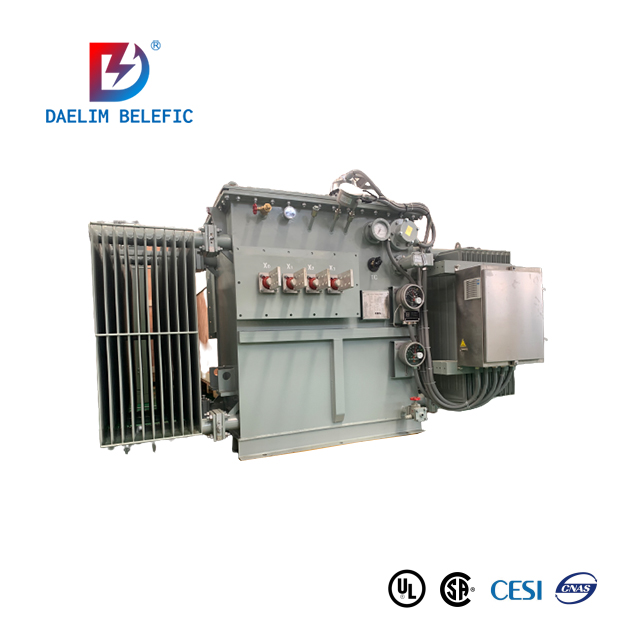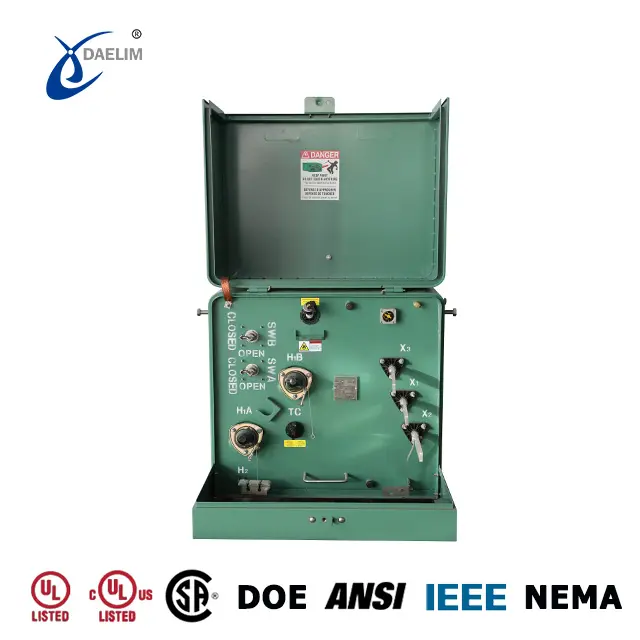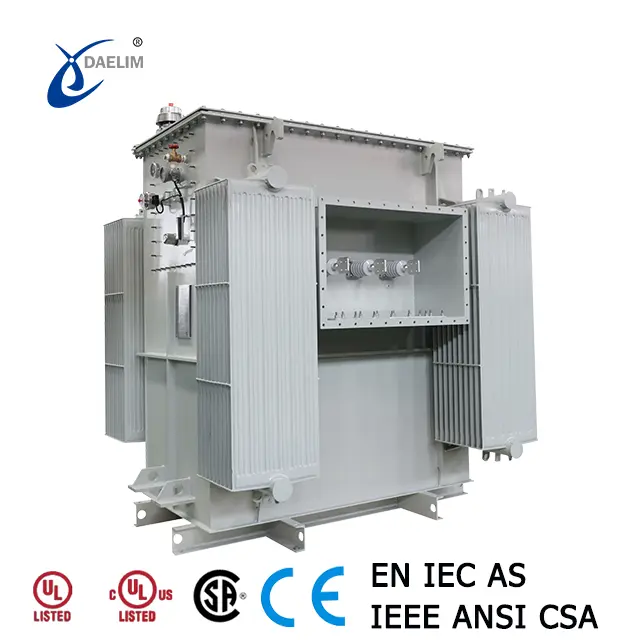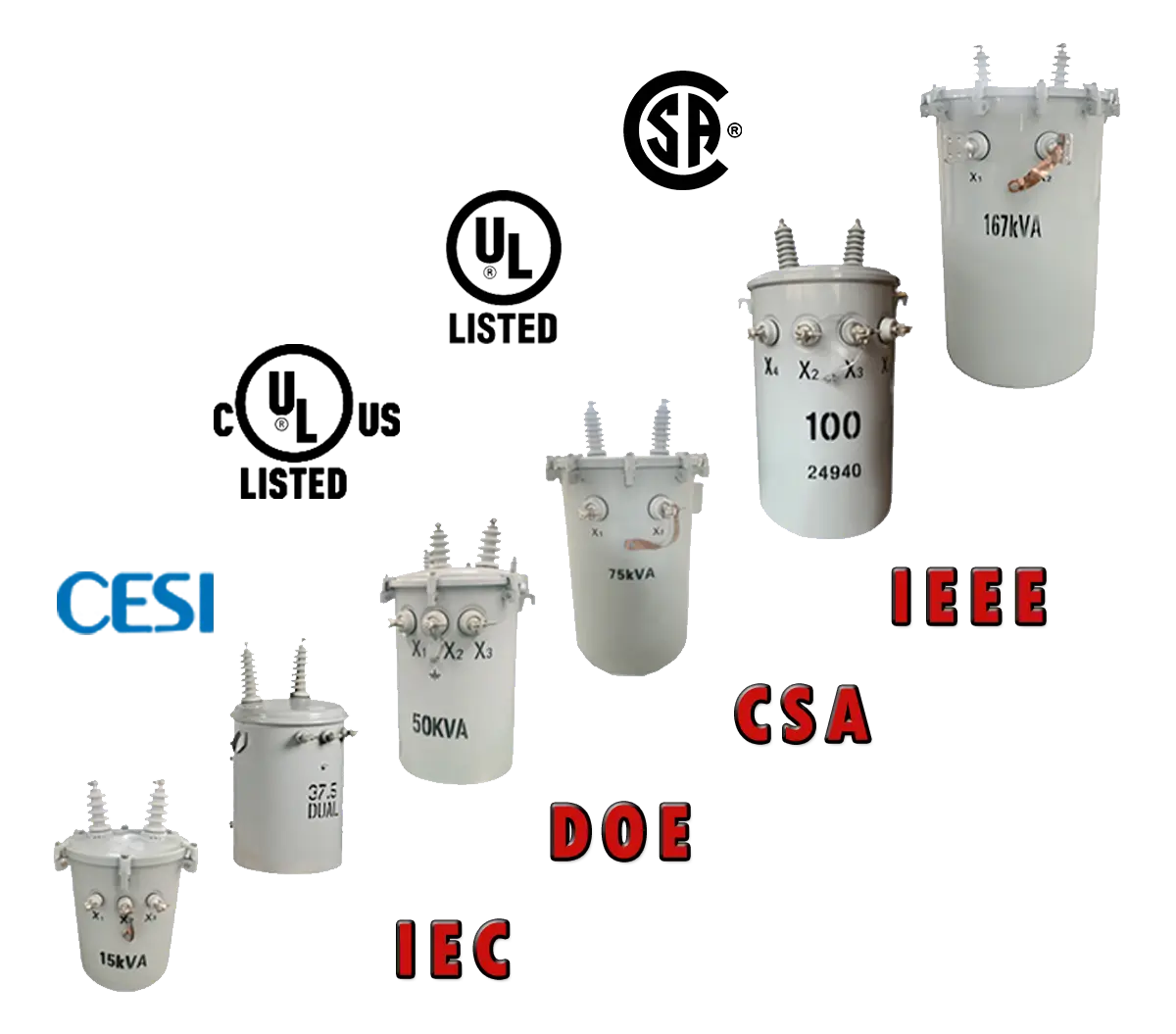Differences Between NLTC and OLTC Transformers
On-load Tap Changer (OLTC) Transformer
Operation: Adjusts the voltage level while the transformer is under load and without interrupting the power supply.
Advantages: Ideal for areas with frequent voltage or load instability, as it allows for real-time voltage regulation and control.
No-load Tap Changer (NLTC) Transformer
Operation: Adjusts the voltage level only when the transformer is de-energized, requiring a power outage to make adjustments.
Advantages: More economical, suitable for areas with stable voltage conditions.
Recommendation
Unstable Voltage or Load: Choose an OLTC transformer to maintain better voltage regulation and control without power interruptions.
Stable Voltage: Choose an NLTC transformer for its cost-effectiveness, as real-time adjustments are unnecessary.
Daelim Transformer offers both NLTC and OLTC transformers to meet your specific needs. Contact us now to get a quote and find the right transformer solution for your requirements.
Related Products
Related Article
Differential Protection of UHV Transformer
Differential protection is the primary protection mechanism for transformers. By analyzing the arrangement of current transformers (CTs), the function and protection range of each differential protection in UHV transformers can be determined.
Effects of Core Rusting on Transformers
Rust on a transformer's silicon steel sheets increases core loss and reduces efficiency. It causes overheating, degrading insulation and shortening lifespan. Rust also lowers magnetic conductivity, raises iron loss, and escalates hysteresis and eddy current losses, leading to higher induced currents, increased heat, and capacity loss.
Unbalanced Current in the Differential Protection Circuit of UHV Transformers
Unbalanced current in UHV transformers' differential protection circuits can arise from inconsistencies in CT ratios, CT transmission errors, excitation surge currents, and transformer voltage regulation. These issues can affect the reliability of differential protection systems. Measures to mitigate unbalanced currents include using balancing coils and software adjustments, electronic and photoelectric transformers, methods to suppress and identify excitation surge currents, and compensating for voltage regulation effects. Implementing these strategies enhances the reliability and stability of UHV transformer protection systems.
How to measure the load loss and short-circuit impedance of a transformer?
To measure transformer load loss and short-circuit impedance, apply a rated frequency sinusoidal voltage to one winding, short-circuit the others, and correct load loss to 75°C. Use voltmeters, ammeters, and power analyzers, and calculate impedance using specific formulas. Ensure accuracy by considering instrument placement and correcting measurements as needed.
What inspections are required before the transformer is put into operation?
Before a transformer is put into operation, ensure the grounding, verify protection device settings, inspect relay protection systems, confirm bushing current transformers are short-circuited, check the oil circulation cooler and breather, adjust protection settings for voltage stability, and connect the gas relay for no-load impact testing.
Differences Between Copper Core and Aluminum Core Transformers
Copper core transformers offer better conductivity, slower temperature rise, and are ideal for high-load applications. Aluminum core transformers are more economical, heat up faster, and are suitable for lower loads. Choose based on your specific load requirements.






